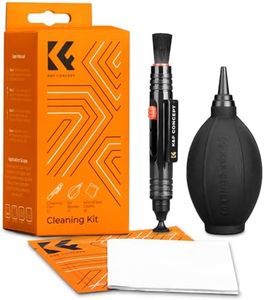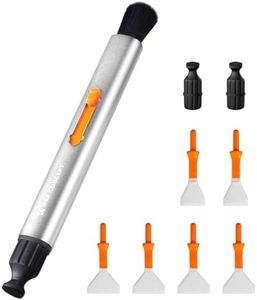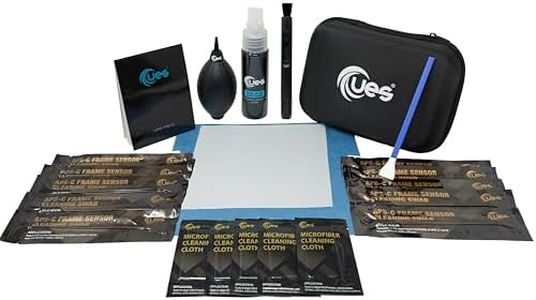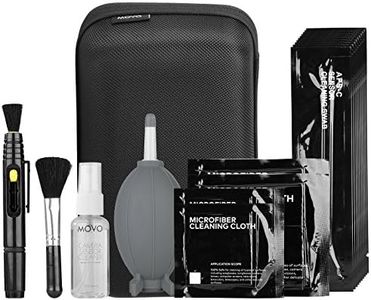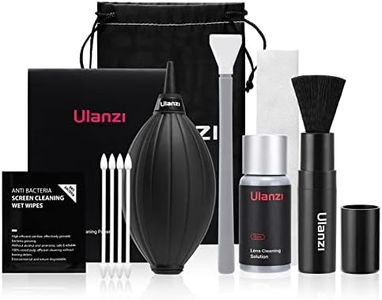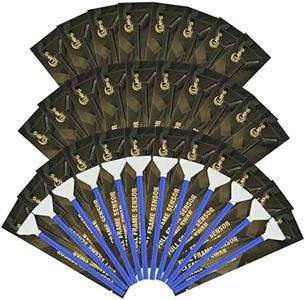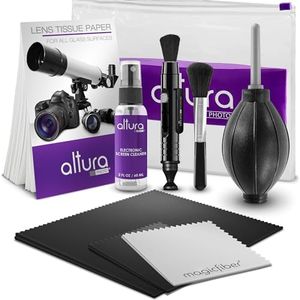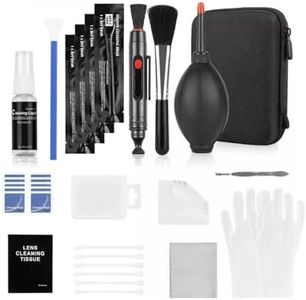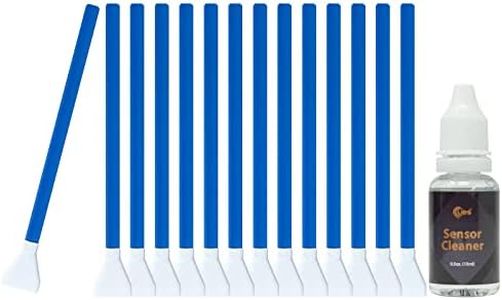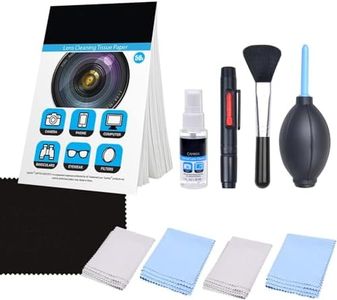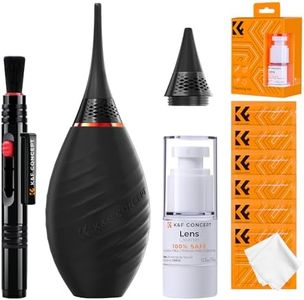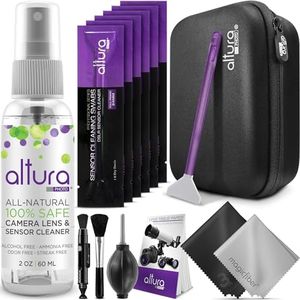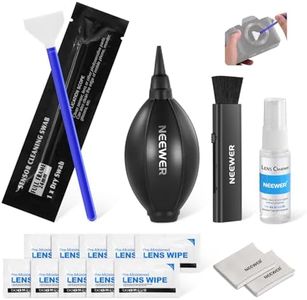We Use CookiesWe use cookies to enhance the security, performance,
functionality and for analytical and promotional activities. By continuing to browse this site you
are agreeing to our privacy policy
10 Best Camera Cleaning Kits
From leading brands and best sellers available on the web.Buying Guide for the Best Camera Cleaning Kits
Choosing the right camera cleaning kit is crucial for maintaining the performance and longevity of your camera and lenses. Picking the right combination of tools helps you keep your sensor, lens glass, and camera body free from dirt, dust, and smudges, which can impact image quality. It's important to understand which tools are included in a kit and what each one is used for, so you can match your regular cleaning needs and your level of experience with the right products. Consider your typical shooting environments and how often you plan to clean your gear, as this will help guide your choices.Lens Cleaning SolutionA lens cleaning solution is a special liquid designed to remove fingerprints, smudges, and spots from your lens glass without leaving streaks or damaging coatings. The formulation makes it safe for delicate optical surfaces, unlike general-purpose cleaners that can be too harsh. Some solutions come in spray bottles, while others are in small dropper bottles. If you clean your lens often, a larger bottle or a well-sealed spray could be more convenient, but if you prefer travel kits, mini bottles work well.
Microfiber Cleaning ClothsMicrofiber cloths are soft, lint-free wipes designed to safely clean sensitive surfaces like lenses and LCD screens. The fine fibers help pick up dust and oils without scratching. This spec is important because poor-quality cloths can leave fibers behind or even scratch your glass. Cloths come in various sizes and thicknesses. Large cloths are good for cleaning bigger surfaces, while small ones suit on-the-go use. Having a few on hand helps you avoid reusing dirty spots, which is especially important if you clean your equipment regularly.
Sensor Cleaning SwabsSensor cleaning swabs are single-use, ultra-soft tools specifically designed for cleaning your camera's image sensor. They are usually paired with a sensor-safe cleaning fluid. Sensor swabs are critical for DSLR or mirrorless users who notice persistent spots in their images that cannot be removed by cleaning the lens. Swabs come in different widths to match various sensor sizes (like APS-C or full-frame). Always choose swabs that match your camera's sensor size, and if you're unwilling to clean your sensor yourself, you may not need this item in your kit.
Air BlowerAn air blower is a hand-squeezed bulb that shoots a clean burst of air to safely remove dust from lenses, sensors, and camera bodies without touching the surface. It's important because physical contact on critical components can cause scratches or leave residue. Sizes vary; larger blowers produce more powerful air bursts, handy for stubborn dust, while compact ones are travel-friendly. Choose based on your camera size and if you often shoot in dusty environments.
Lens Cleaning PenA lens cleaning pen is a dual-ended tool with a retractable brush on one side for sweeping away dust and a soft cleaning tip on the other for removing smudges. Lens pens are convenient for quick spot cleaning, especially outdoors. The brush type and pad material can vary, with softer and fuller brushes being better for sensitive optics. If you need a compact, quick solution for fieldwork, a lens pen is very practical, but for deep cleaning, it's best paired with cloths and solution.
Cleaning Tissues or WipesCleaning tissues or single-use wipes are paper products designed for streak-free cleaning of lenses and screens. These are useful for fast and disposable cleaning, especially when you don't want to reuse a cloth. Some tissues can be too abrasive, so always choose those marked safe for optics. Pre-moistened wipes add convenience on the go. Opt for these if you frequently travel or prefer single-use products for hygiene.
BrushA cleaning brush is a soft-bristled tool designed to sweep dust and particles from crevices on camera bodies, lens mounts, and around buttons. The softness and density of the bristles are key—hard bristles can scratch, while soft, full brushes gently lift dust. A brush is especially useful for field shooters or those who often deal with sand or environmental debris. Those who mostly shoot indoors might use it less often, but it's helpful to have one in a complete kit.
